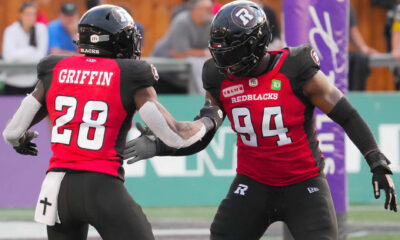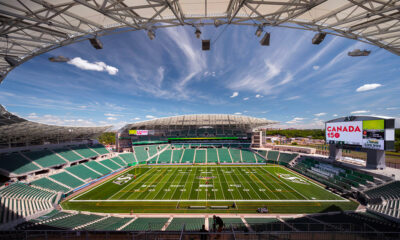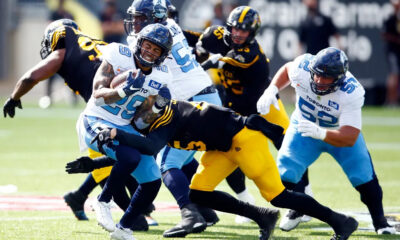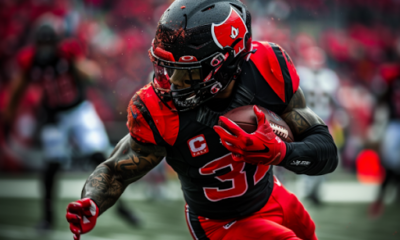
Football is a sport celebrated for its intensity and competitiveness, no wonder it ranks highly in terms of injury risks. The physically demanding nature of the game, which involves high-speed collisions, abrupt directional changes, and repetitive impacts, predisposes players to a range of injuries. Thus, it’s a must for players, coaches, and medical professionals alike to fully understand their characteristics, prevention, and effective treatment options.
This article delves into common football injuries and the role of proactive and therapeutic measures in ensuring player safety and longevity in the sport. Read on!
Common Football Injuries
Football, characterized by its high intensity and physical demands, can lead to various injuries. Here are common examples and how to best address them:
Sprains and Strains
Sprains and strains are among the most frequent injuries in football, affecting muscles, ligaments, and tendons. Ankle and knee sprains are particularly prevalent due to the running, cutting, and contact aspects of the game. Strains commonly occur in the hamstrings, quadriceps, and calves, often due to overuse or inadequate warm-up.
To address sprains and strains more effectively, immediate treatment follows the RICE protocol—rest, ice, compression, and elevation. Long-term recovery may involve physical therapy to restore strength and flexibility. Preventive measures such as proper conditioning and stretching are also vital to reduce recurrence.
Fractures
Bone fractures in football typically result from high-impact collisions or awkward falls. The most common sites for fractures are the legs and arms. These injuries can range from simple breaks, which may heal with immobilization, to complex fractures that require surgical intervention.
When it comes to the treatment, it’s important to know that the available options depend on the fracture’s severity and location. Simple fractures may be managed with casting and rest, while more severe breaks might necessitate surgery to realign and stabilize the bone fragments. Lastly, rehabilitation to regain strength and mobility follows the initial healing period.
But aside from the ones mentioned above, chiropractic treatments for sports injuries like fractures are also an option as they can help manage and recover from sports injuries. Aligning the spine and ensuring that the body’s skeletal and muscular systems function optimally with the help of a sports injury chiropractor can significantly aid in recovery and pain management.
Concussions
A concussion is a form of traumatic brain injury occurring when a sudden blow to the head or body impacts the brain inside the skull, disrupting normal function. Some common symptoms include persistent headaches, dizziness, confusion, memory disturbances, and increased sensitivity to light and noise.
Some individuals may also experience nausea, blurred vision, and balance issues. The severity of symptoms and their impact can vary greatly, making it crucial to seek immediate medical evaluation to manage the condition effectively and prevent further complications.
To manage concussions, immediate removal from play and assessment by a healthcare professional are crucial. Rest and a gradual return to activity, guided by medical advice, are also needed for recovery. It’s also important to conduct comprehensive evaluations and monitoring to ensure the athletes only return to play when it’s safe to do so.

Anterior Cruciate Ligament (ACL) Injuries
The ACL, a crucial ligament in the knee, can tear when a player suddenly changes direction, stops quickly, or lands from a jump. This injury is particularly disabling and can sideline an athlete for an extended period.
To effectively deal with ACL injuries, surgery is usually necessary to replace the torn ligament, followed by extensive physical therapy. On the other hand, a rehabilitation program focuses on restoring knee function and strength. Preventive training programs aimed at improving leg strength and stability can also help reduce the risk of ACL injuries.
Meniscal Tears
Meniscal tears are common in football due to the twisting motions often required during play. The meniscus, a piece of cartilage that cushions and stabilizes the knee, can be torn if the knee is twisted while bearing weight.
Treatment options for meniscal tears vary based on their severity and the athlete’s needs. For instance, minor tears may respond well to rest, ice, and anti-inflammatory medications. More severe tears might require arthroscopic surgery to repair or remove damaged cartilage.
Shoulder Dislocations And Injuries
Shoulder injuries in football are typically caused by impacts or extended arm movements. Dislocations occur when the ball of the shoulder comes out of the socket, leading to pain and inability to move the shoulder.
Initial treatment for shoulder dislocations and injuries involves reduction, where the dislocated shoulder is gently put back into place. This is followed by immobilization and physical therapy to strengthen the muscles around the shoulder and prevent future dislocations. Surgery may also be required for recurrent dislocations or associated injuries.
Conclusion
Injuries in football are an unfortunate reality of the game. But with the right preventive measures and treatments, players can reduce their risk and recover effectively when injuries do occur.
Continue the CFL Football discussions on our offical CFL Discord Channel

Big Announcement: CFL Unveils Free Live Streaming Platforms
Get Alerts & Stay Connected
CFL iPhone AppCFL Android App




















